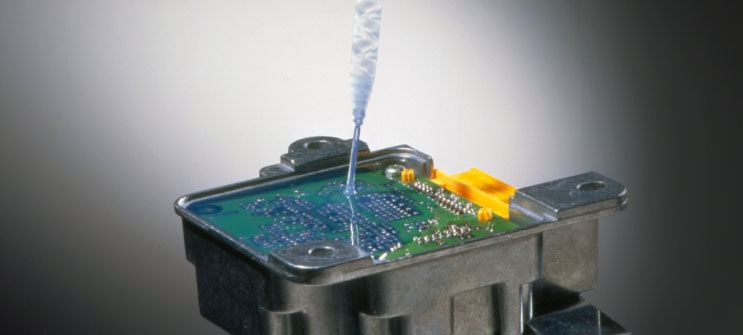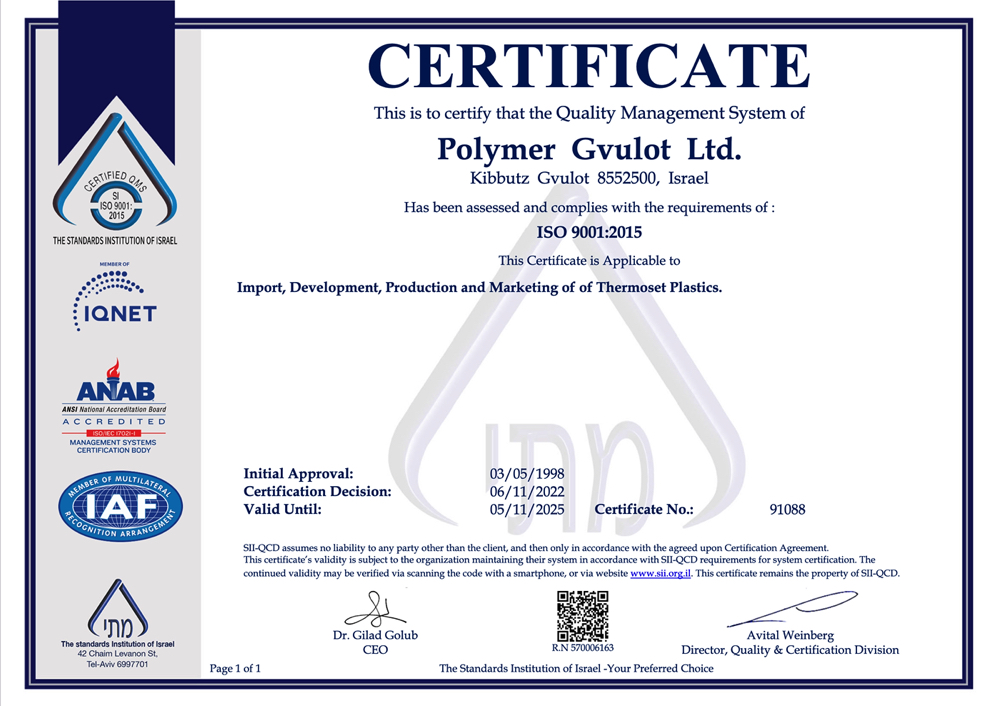
RTV silicone use three different types of silicone chemistry to form an elastomer:
- Condensation cure RTV – Cures to form an elastic silicone rubber when exposed to moisture in the environment at room temperatures.One part RTVs are categorized into Alkoxy Oxime, or Acetoxy, based upon the by-products that occur during cure
- Addition cure – Cures to form an elastic silicone rubber when exposed to either heat or room temperature. Catalyzed using platinum.
- UV cure – When exposed to UV-LED light it initiates crosslinking through a photochemical reaction rather than heat which leads to a fast curing of the silicone.
One Part Condensation Cure
- Since the catalyst is moisture that needs to penetrate through the silicone rubber the curing time is longer as the thickness of the sealant/adhesive is higher.
- Their cure time cannot be accelerated by heat.
- Condensation cure silicone cure with a slight degree of shrinkage since by products occur during curing.
- If the RTV is acetoxy the byproducts may cause damage (corrosion) in electronic devices.
Addition Cure
- Addition cure systems are two-part silicones which require the mixture of a silicone polymer with a catalyst to initiate the cure, they are used for applications such as potting and encapsulating
- The addition 2K systems do not release reaction by-products so they can cure in closed environments and closed packages.
- Their cure can be greatly accelerated by heat. In a production lines, the parts can be given a fast, partial heat cure to facilitate a quick setup of the adhesive/encapsulant after which the parts are allowed to finish curing at room temperature off the production line.
- The major disadvantage of addition curing systems is that certain substances and substrates may inhibit their cure. Care must be taken to avoid contamination from other silicone RTVs that are cured with metallic salts, chlorinated rubber compounds, PVC plasticizers, amines, sulfur containing materials and butyl elastomers.
UV-Cure
UV cure silicone rubber belongs to a new class of rubber that offers high cure speed at low temperatures. When exposed to UV-LED light it initiates crosslinking through a photochemical reaction rather than heat.
The silicone cures within seconds to minutes at room temperature consequently the productivity increases and the energy consumption is lower.
Polymer-g has a vast variety of silicones – contact us and our experts will help you to choose the best one for your application.
